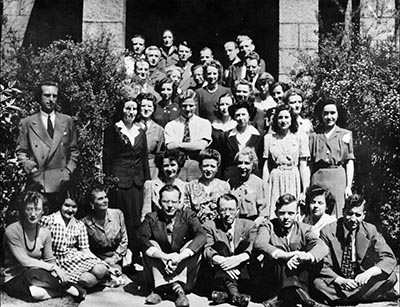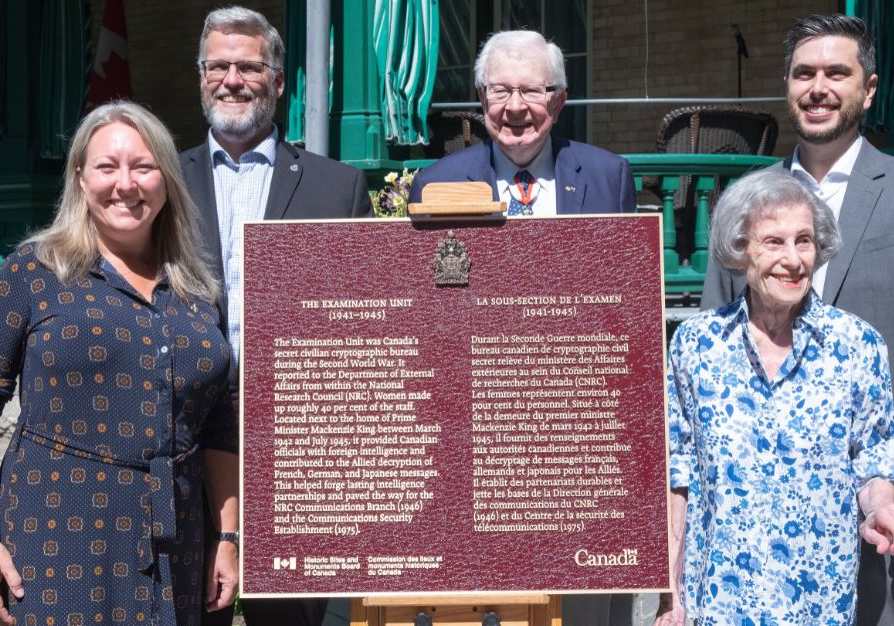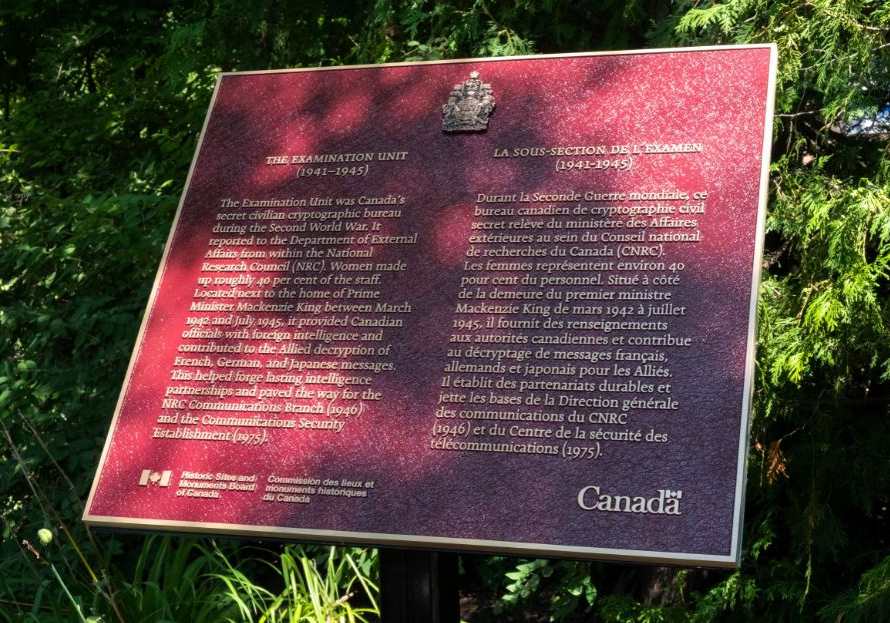The Examination Unit (1941–1945) National Historic Event

© Library and Archives Canada/PA-178055
The Examination Unit (1941–1945) was designated a national historic event in 2021.
Historical importance: The first in Canada and the only civilian cryptographic bureau active during the Second World War
Commemorative plaque: 335 Laurier Avenue East, Ottawa, OntarioFootnote 1
The Examination Unit was Canada’s secret civilian cryptographic bureau during the Second World War. It reported to the Department of External Affairs from within the National Research Council (NRC). Women made up roughly 40 per cent of the staff. Located next to the home of Prime Minister Mackenzie King between March 1942 and July 1945, it provided Canadian officials with foreign intelligence and contributed to the Allied decryption of French, German, and Japanese messages. This helped forge lasting intelligence partnerships and paved the way for the NRC Communications Branch (1946) and the Communications Security Establishment (1975).
The Examination Unit (1941–1945)
The first in Canada and the only civilian cryptographic bureau active during the Second World War, the Examination Unit (XU) operated under the administration of the National Research Council (NRC) and reported to the Department of External Affairs, from June 1941 until August 1945, laying the foundations for the Communications Branch of the NRC (1946) and its successor, the Communications Security Establishment (1975).
Canada’s first cryptographic bureau
Women comprised roughly 40 percent of the total known workforce of the XU. Reports it generated contributed to an understanding by Canadian government officials and ministers of the value of foreign intelligence for Canadian decision-making, which had previously gone unrecognized. Its contributions to Allied efforts at breaking the codes and ciphers used in secret military and diplomatic communications, and its decryption of intercepted Vichy, Free French, German, Japanese, and Spanish-language messages provided Canada with its own, independent source of foreign intelligence, and the means of building important intelligence partnerships with the United States, Britain, and the Commonwealth, which continued after the war.
The first Canadian cryptographic bureau reported to External Affairs but operated under the administration of the NRC, as a way to hide its budget and activities. By August 1941, the team of nine had successfully solved several codes and ciphers used by Germany, Japan, Vichy France, and Colombia, some of which had not been given attention by the codebreaking services of Britain and the United States. It was the first to figure out the transposition cipher used by the Vichy fleet, which it quickly shared with the British and Americans. The XU increasingly specialized in Japanese and French traffic, including attention to Free French communications after Canada and the United States severed diplomatic relations with Vichy in late 1942. Free French officials used codes and ciphers already known to the XU, making this a relatively easy transition for the Canadians. The resulting decrypts helped the Department of External Affairs broaden its understanding of events in occupied Europe and the Pacific, rather than relying exclusively on British and American assessments.

© Parks Canada

© Parks Canada
Closed in 1945
After Germany surrendered in May 1945, the XU shut down its French section and vacated the Victorian residence at 345 Laurier Avenue East in Ottawa, which had housed the cryptographic unit since March 1942. On August 1, further consolidation occurred when the Japanese section joined the Canadian Army’s Joint Discrimination Unit at the former La Salle Academy on Sussex Drive. Fearing that the Allies would be unlikely to share foreign intelligence if Canada had none to offer in return, External Affairs decided to maintain a civilian cryptographic bureau after the war. When the Joint Discrimination Unit closed in June 1946, 17 experienced XU staff joined the new Communications Research Centre, which had been renamed the Communications Branch of the NRC by the time it began operations in September 1946.
Legacies
The experience of operating an independent cryptographic centre in Canada during the war opened officials’ eyes to the value of foreign intelligence. Without the wartime foundations laid by the XU, a postwar signals intelligence capacity, which eventually resulted in today’s Communications Security Establishment (established in 1975), could not have come into being. Operating the XU within a wartime alliance system also helped Canada enter into an unprecedented peacetime signals intelligence sharing system during the early years of the Cold War, which established the foundations for today’s Five Eyes alliance.
The National Program of Historical Commemoration relies on the participation of Canadians in the identification of places, events and persons of national historic significance. Any member of the public can nominate a topic for consideration by the Historic Sites and Monuments Board of Canada.
- Date modified :